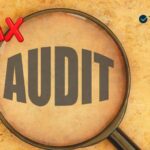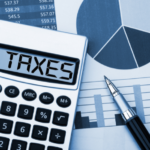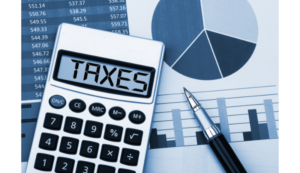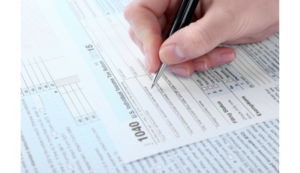The income tax return (ITR) forms released by the government for the financial year (FY) 2018-2019 mandates detailed reporting. For instance, as compared to earlier years, when only aggregate amounts were to be reported under allowances and perquisites, for FY 2018-2019, details of different allowances, as well as perquisites earned during the FY, are required to be reported separately.
Given the detailed reporting requirement, pensioners need to keep the following points in mind while filing their tax return:
1. Pension received – salary income or income from other sources?
Pension received by an individual from his former employer is taxable as salary income and therefore will be reported under the head ‘Income from Salaries’ in the ITR. On the other hand, the pension received by a family member of the deceased employee is taxable under the head ‘Income from other sources.’
Pension received can either be uncommuted or commuted pension. Uncommuted pension refers to periodic payments received by the individual while commuted pension means a lump sum payment received by the individual upfront in lieu of the periodic pension.
As per the provisions of the Income-tax Act, 1961 (Act), the uncommuted pension is fully taxable. On the other hand, there is tax exemption which can be availed in respect of the commuted pension to the extent of the limits prescribed and subject to specified conditions.
LIC/any other approved fund may pay the pension to an individual from the funds contributed by the employer. Commuted pension received from such fund is exempt whereas uncommuted pension from such fund is taxable under the head ‘Income from Salaries’.
Taxability in case of income from other sources:
If the monthly pension is received by a family member of the deceased employee then it is treated as ‘income from other sources’, 1/3rd of such pension is tax-free subject to a maximum of Rs 15,000 per annum and the remaining, if any, is taxable as income from other sources.
Separately, the employee may also contribute from his/her own funds to the LIC/any other approved fund for the purpose of receiving a pension at a later stage.
Commuted pension received from such fund is exempt to the conditions specified therein, whereas uncommuted pension from such fund is taxable under ‘Income from other sources.’
2. Which ITR is to be used in filing a tax return?
ITR 1 is to be used for individuals who qualify to be an Ordinary Resident in India, who have net taxable income of Rs 50 lakh or less; and who have income from salary or one house property or income from other sources and their agriculture income does not exceed Rs 5,000.
Further, as per the recently notified changes, an individual who is a director in a company or who holds unlisted shares, cannot use ITR 1.
If an individual does not qualify to file ITR 1 as per above-mentioned conditions and does not have any business income, then he/she should use ITR 2.
Further, if a pensioner has income from business or profession as well, then ITR 3 or ITR 4 will have to be used.
The reporting of pension income would depend upon the ITR forms to be used for filing the tax return, which in turn would be determined based on the nature and amount of the other type of income earned by the individual. Generally, ITR 1 and ITR 2 are commonly used for pensioners.
3. How to report pension income in the tax return form?
Individuals who are receiving a pension:
Where the individual receives pension income from the fund to which contributions are made by the employer, in case of ITR 2, under the salary schedule, the individual has to report the name, address and tax deduction and collection account number (TAN) (mandatory only if tax is withheld on pension) of the employer/LIC/any other fund.
Also, the individual will have to select ‘pensioners’ as a category in the field for the nature of employment in the salary schedule.
Commuted pension beyond the limits exempt under the Act and the entire uncommuted pension should be reported as “Commuted pension” or “Annuity or pension” under ‘salary under section 17(1)’ of the Act as taxable.
The commuted pension which is exempt from the tax should be entered in the field “Commuted value of pension received under section 10(10AA)” selected from the dropdown available under “Allowances to the extent exempt under section 10”.
The reporting of commuted and uncommuted pension in ITR 1 remains the same as ITR 2 except, while reporting the pension income, there is no requirement for the individual to enter name, address of the employer, also this income is to be directly reported under section 17(1) without selecting “Commuted pension” or “Annuity or pension” as applicable under ITR 2.
Where the individual receives the pension from LIC/any other approved fund out of the contributions made by the individual from his own funds, he/she needs to report uncommuted pension under section “Any other income” of the schedule “income from other sources”. Commuted pension, if any, will have to be reported under the schedule “Exempt income” as “any other” in ITR 1 and as “any other” under the point “Other exempt income” in ITR 2.
Family members who are earning pension will have to report the same under ‘Any other income earned’ in the other sources schedule in ITR 2.
For ITR 1, the individual will have to select ‘Family pension’ from the drop-down under Income from other sources.
Points to note:
In view of the above points, it is important to determine the head under which the pension is taxable and the ITR form applicable to the individual. Apart from this, the following are some other points which should be looked into by pensioners at the time of filing their tax returns:
If the employer has issued Form 16 for pension paid, then the individual should ensure that the details of pension received and reported in the tax return matches with such Form 16.
If there are any taxes withheld by the employer on the pension, then the details of such taxes withheld will have to be provided in the TDS schedule in the tax return form in order to obtain credit for such taxes withheld.
The pension income and taxes withheld thereon should be verified with Form 26AS available on the income tax portal.









